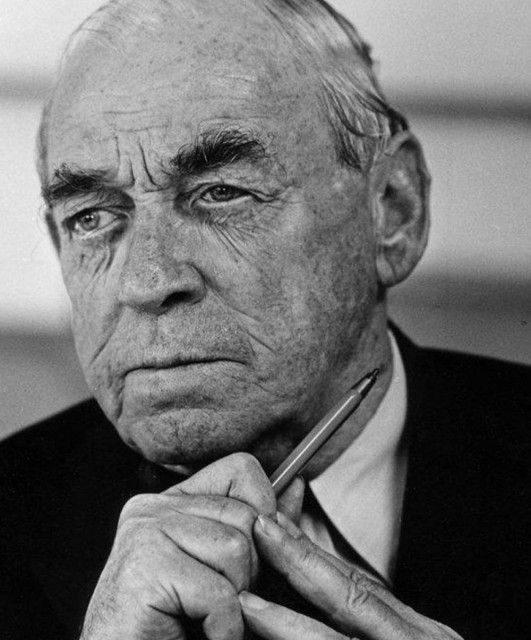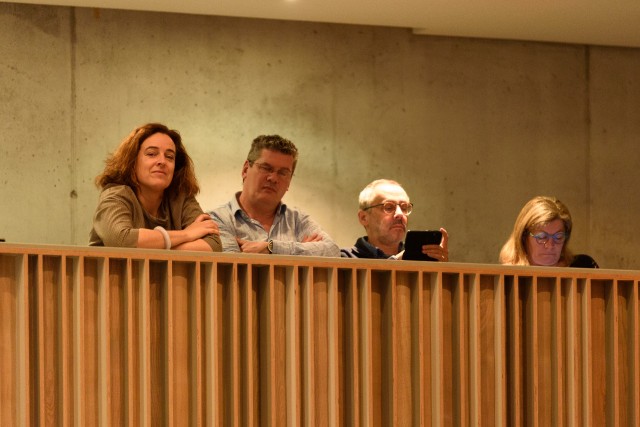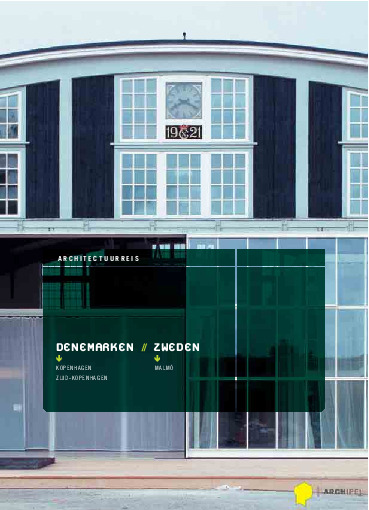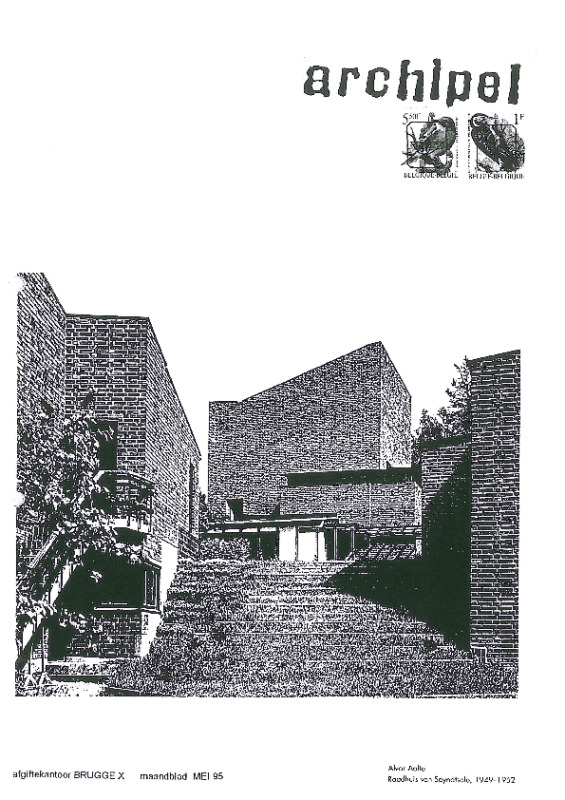Alvar Aalto

Hugo Alvar Henrik Aalto (°Kuortane, Finland, 3 February 1898 – †Helsinki, 11 May 1976) was a Finnish architect and designer, as well as a sculptor and painter.
His work includes architecture, furniture, textiles and glassware. Aalto’s early career runs in parallel with the rapid economic growth and industrialization of Finland during the first half of the twentieth century and many of his clients were industrialists; among these were the Ahlström-Gullichsen family. The span of his career, from the 1920s to the 1970s, is reflected in the styles of his work, ranging from Nordic Classicism of the early work, to a rational International Style Modernism during the 1930s to a more organic modernist style from the 1940s onwards. His furniture designs were considered Scandinavian Modern. What is typical for his entire career, however, is a concern for design as a Gesamtkunstwerk, a total work of art; whereby he – together with his first wife Aino Aalto – would design not just the building, but give special treatments to the interior surfaces and design furniture, lamps, and furnishings and glassware. The Alvar Aalto Museum, designed by Aalto himself, is located in what is regarded as his home city Jyväskylä.
His father, Johan Henrik Aalto, was a Finnish-speaking land-surveyor and his mother, Selly (Selma) Matilda (née Hackstedt) was a Swedish-speaking postmistress. When Aalto was 5 years old, the family moved to Alajärvi, and from there to Jyväskylä in Central Finland. Aalto studied at the Jyväskylä Lyceum school, where he completed his basic education in 1916 and took drawing lessons from a local artist named Jonas Heiska. In 1916 he then enrolled to study architecture at the Helsinki University of Technology. His studies were interrupted by the Finnish Civil War, which he fought in. He fought on the side of the White Army and fought at the Battle of Länkipohja and the Battle of Tampere. He built his first piece of architecture while still a student, a house for his parents, at Alajärvi. Afterwards, he continued his education, graduating in 1921.9 In the summer of 1922 he began his official military service, finishing at the Hamina reserve officer training school, and was promoted to reserve second lieutenant in June 1923.
In 1920, while still a student, Aalto made his first trip abroad, travelling via Stockholm to Gothenburg, where he even briefly found work with the architect Arvid Bjerke.11 In 1922, he accomplished his first independent piece at the Industrial Exposition in Tampere. In 1923 he returned to Jyväskylä, where he opened his first architectural office, under the name ‘Alvar Aalto, Architect and Monumental Artist’. At that same time he also wrote articles for the Jyväskylä newspaper Sisä-Suomi under the pseudonym Remus. During this time, he designed a number of small single-family houses in Jyväskylä, and the office’s workload steadily increased. In 1925, he married architect Aino Marsio. Their honeymoon journey to Italy was Aalto’s first trip there, though Aino had previously made a study trip there. The latter trip together sealed an intellectual bond with the culture of the Mediterranean region that was to remain important to Aalto for the rest of his life. On their return, they continued with a number of local projects, notably the Jyväskylä Worker’s Club. However, the Aaltos moved their office to Turku in 1927, and started collaborating with architect Erik Bryggman. The office moved again in 1933 to Helsinki.
The Aaltos designed and built a joint house-office (1935–36) for themselves in Munkkiniemi, Helsinki, but later (1954–56) had a purpose-built office erected in the same neighbourhood – nowadays the former is a “house museum” and the latter the premises of the Alvar Aalto Academy. In 1926 the young Aaltos designed and had built a summer cottage in Alajärvi, Villa Flora. In 1938, the Aaltos visited the United States for the first time, ostensibly to visit the Finnish Pavilion, which they had designed, for the New York World Fair of the following year. Aino Aalto died of cancer in 1949. Aino and Alvar Aalto had 2 children, a daughter Johanna “Hanni” Alanen, born Aalto, 1925, and a son Hamilkar Aalto, 1928. In 1952 Aalto married architect Elissa Mäkiniemi (died 1994), who had been working as an assistant in his office. In 1952 Aalto designed and had built a summer cottage, the so-called Experimental House, for himself and his new wife in Muuratsalo in Central Finland. Alvar Aalto died on 11 May 1976, in Helsinki and is buried in the Hietaniemi cemetery in Helsinki.





































